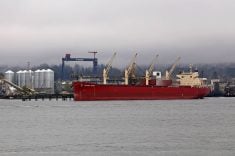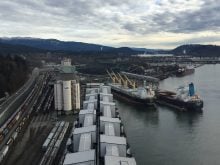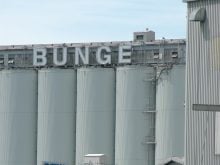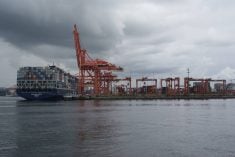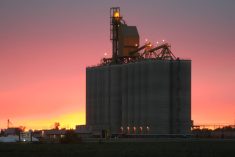Canada has approved construction of the Roberts Bank Terminal 2 Project (RBT2) at the Port of Vancouver after a decade-long environmental assessment.
“With this approval, we can advance one of Canada’s most important trade infrastructure projects to date, bolster our national supply-chain resilience, and deliver generational economic benefits for Canadians and Canadian businesses,” Robin Silvester, president of the Vancouver Fraser Port Authority, said in a news release.
The three-berth container terminal will provide an additional 2.4 million 20-foot equivalent units (TEUs) of capacity, increasing Canada’s west coast container capacity by one-third.
Read Also

Canadian Food Inspection Agency extends chronic wasting disease control program consultation deadline
Date extended for consultation period of changes to CWD program
Many of Canada’s crops are transported to overseas markets in containers, including half of its lentils, one-quarter of its peas and all its special crops.
The Canada West Foundation (CWF) welcomed the federal approval of RBT2.
“This project is especially important to the West where 19 percent of Saskatchewan’s (gross domestic product) and eight percent of Alberta’s move through the port,” Gary Mar, president of the CWF, said in a news release.
The foundation said RBT2 will allow Canada to keep pace in the Indo-Pacific region, which is exploding with opportunities.
“A generational challenge requires generational infrastructure, and the Roberts Bank expansion is that sort of investment,” said Mar.
The foundation noted that the environmental approval process took far too long and required numerous changes to the port to satisfy stakeholders and Indigenous groups.





